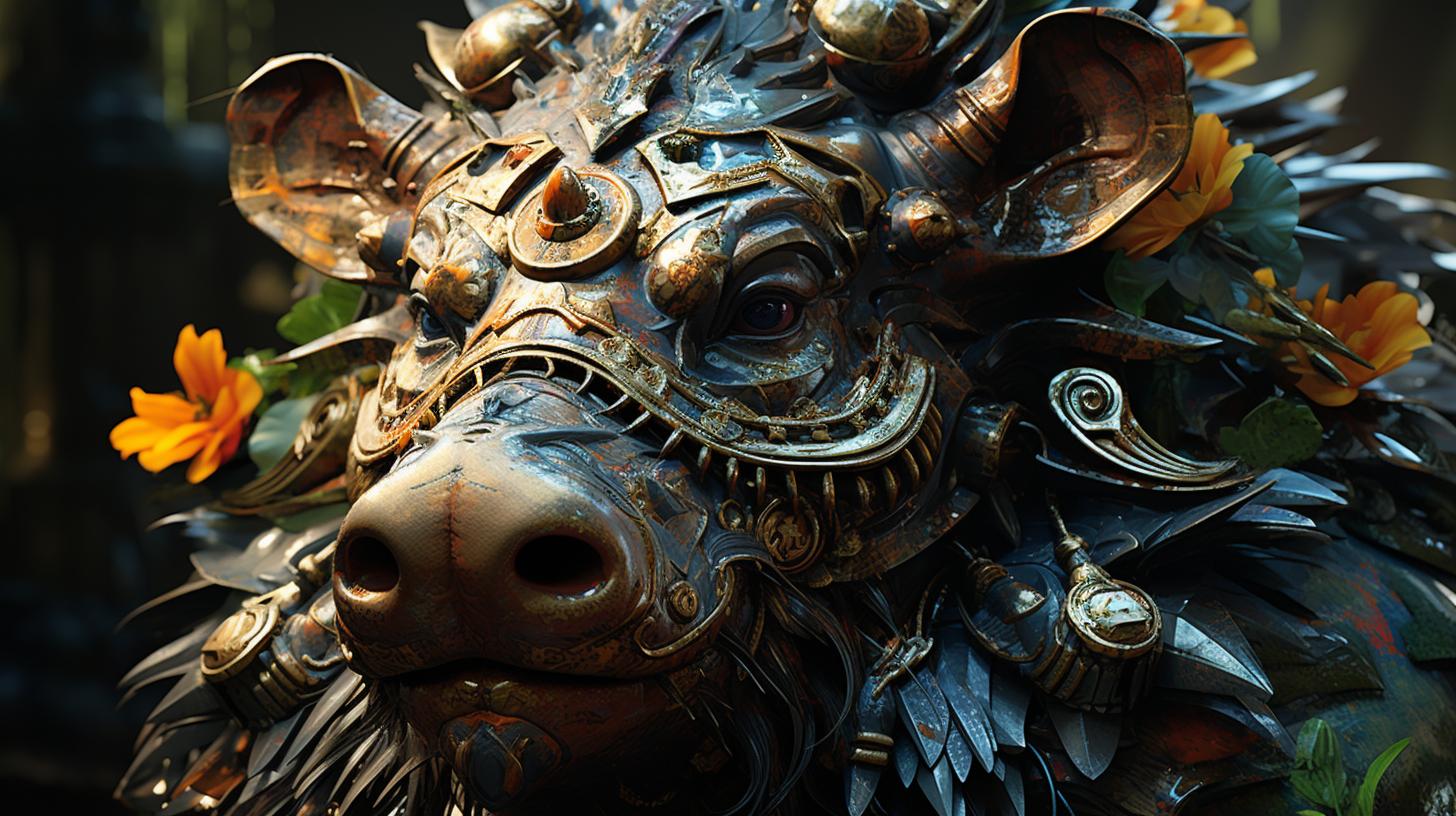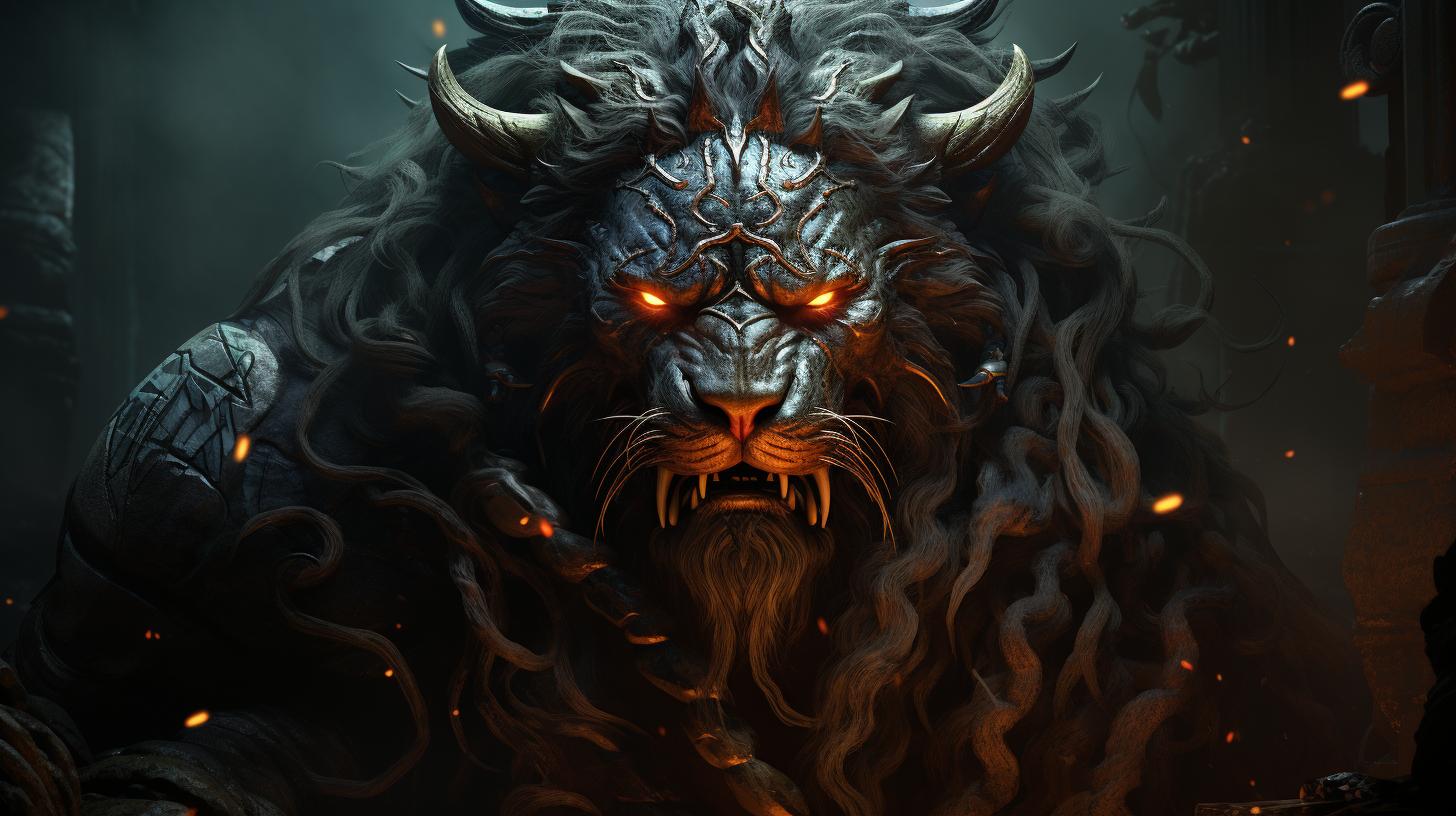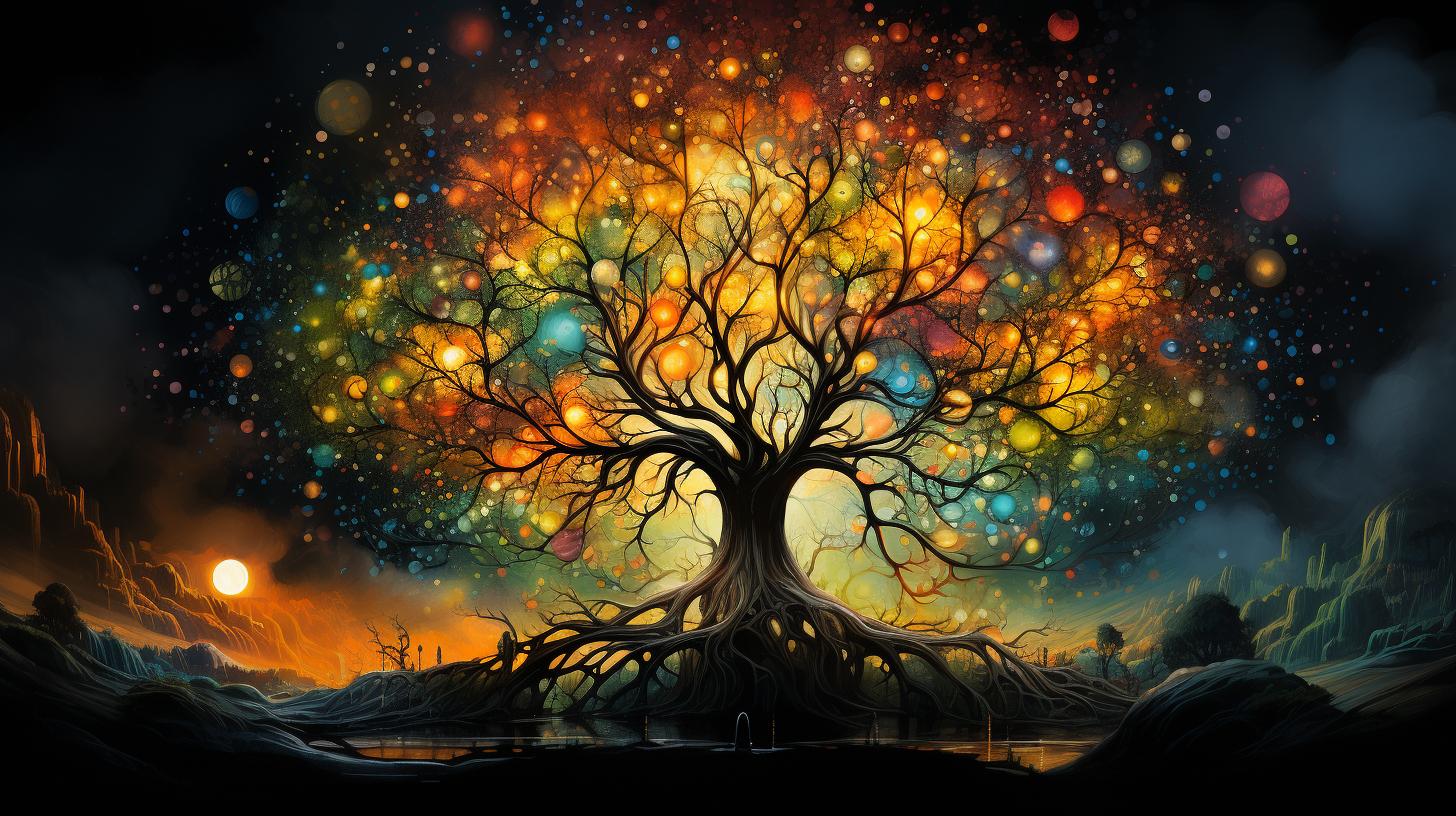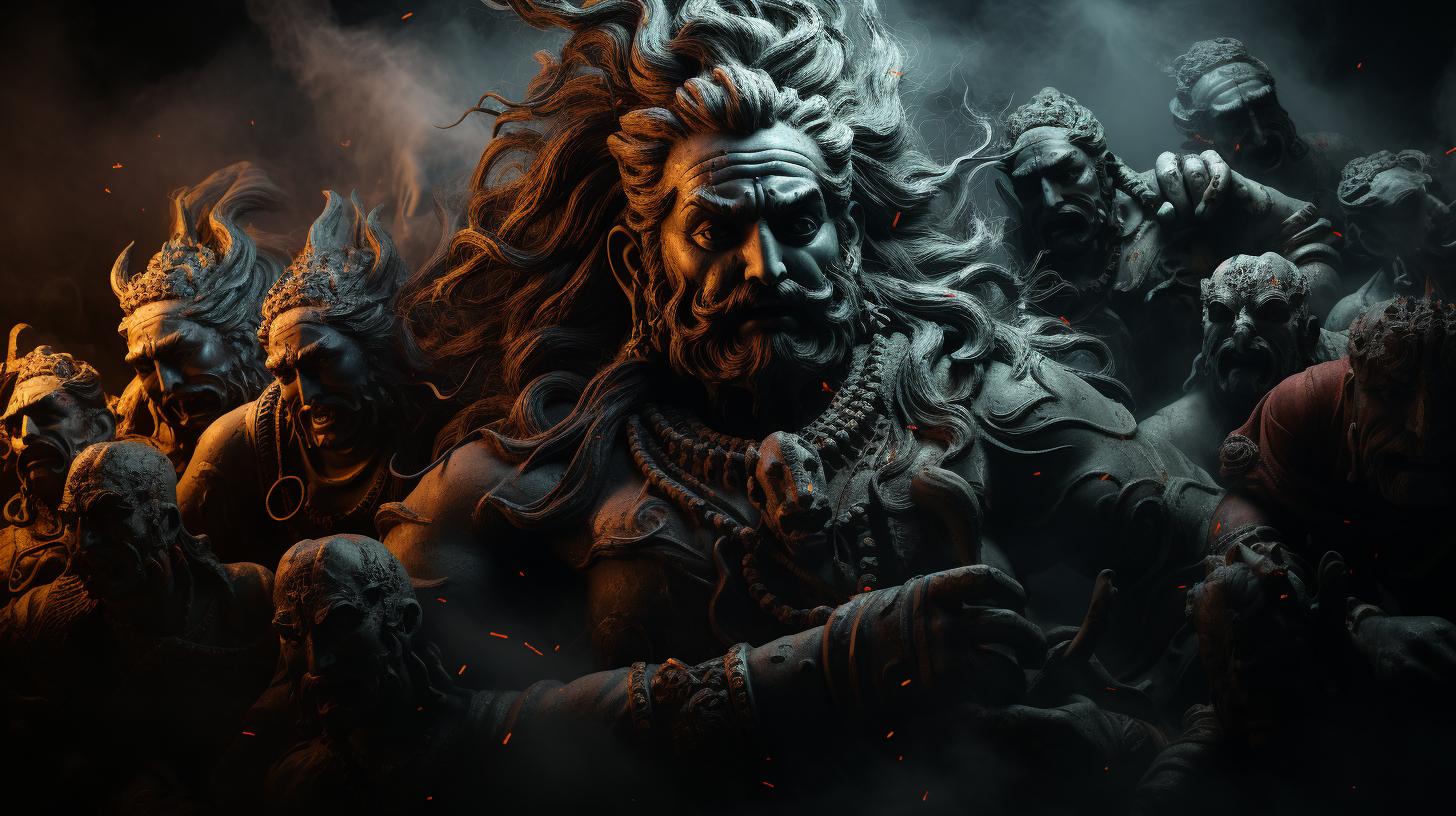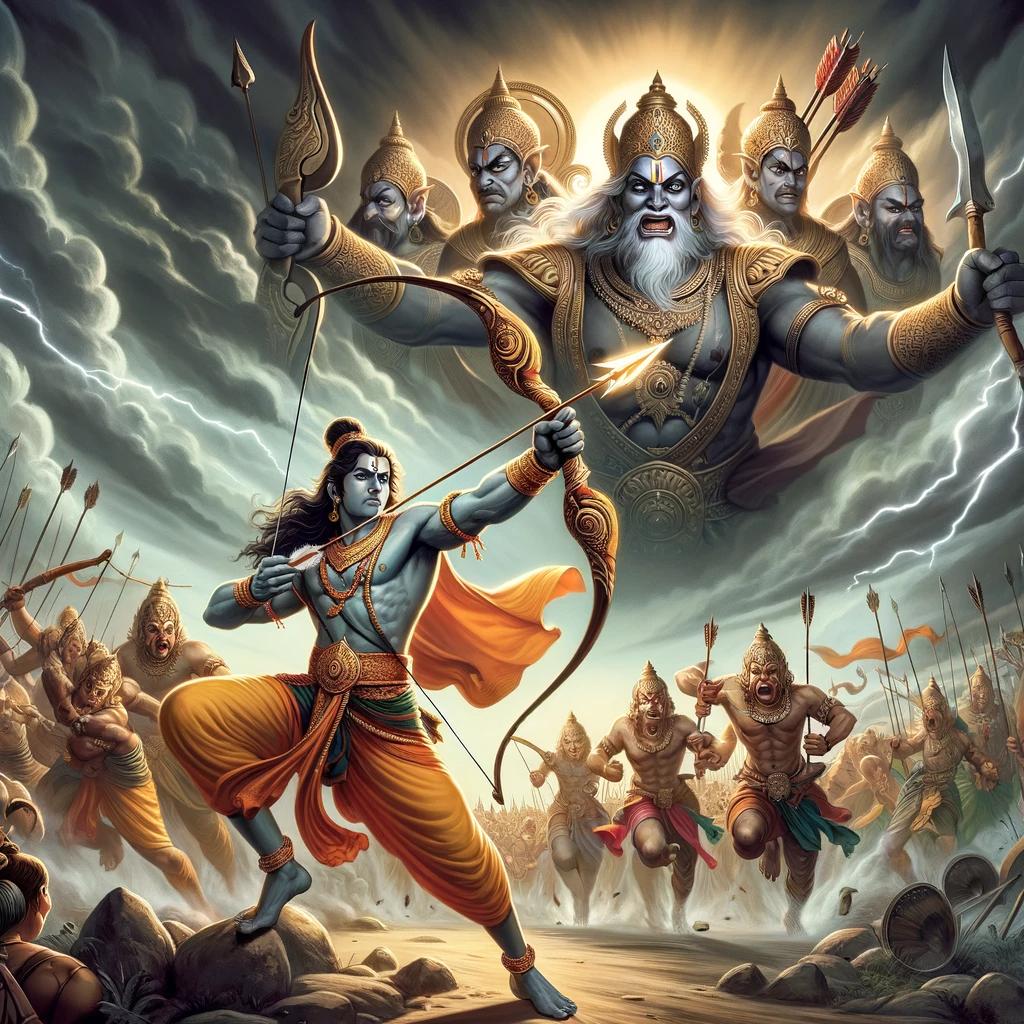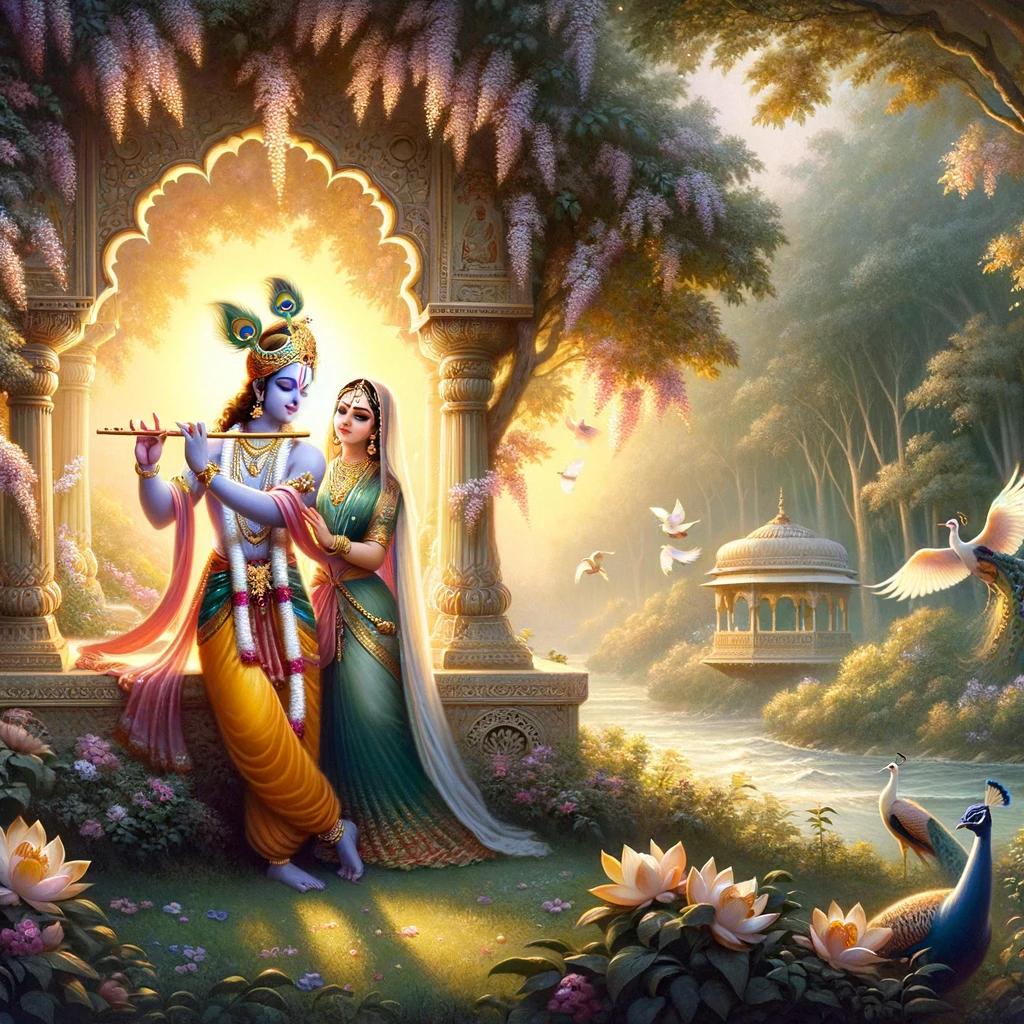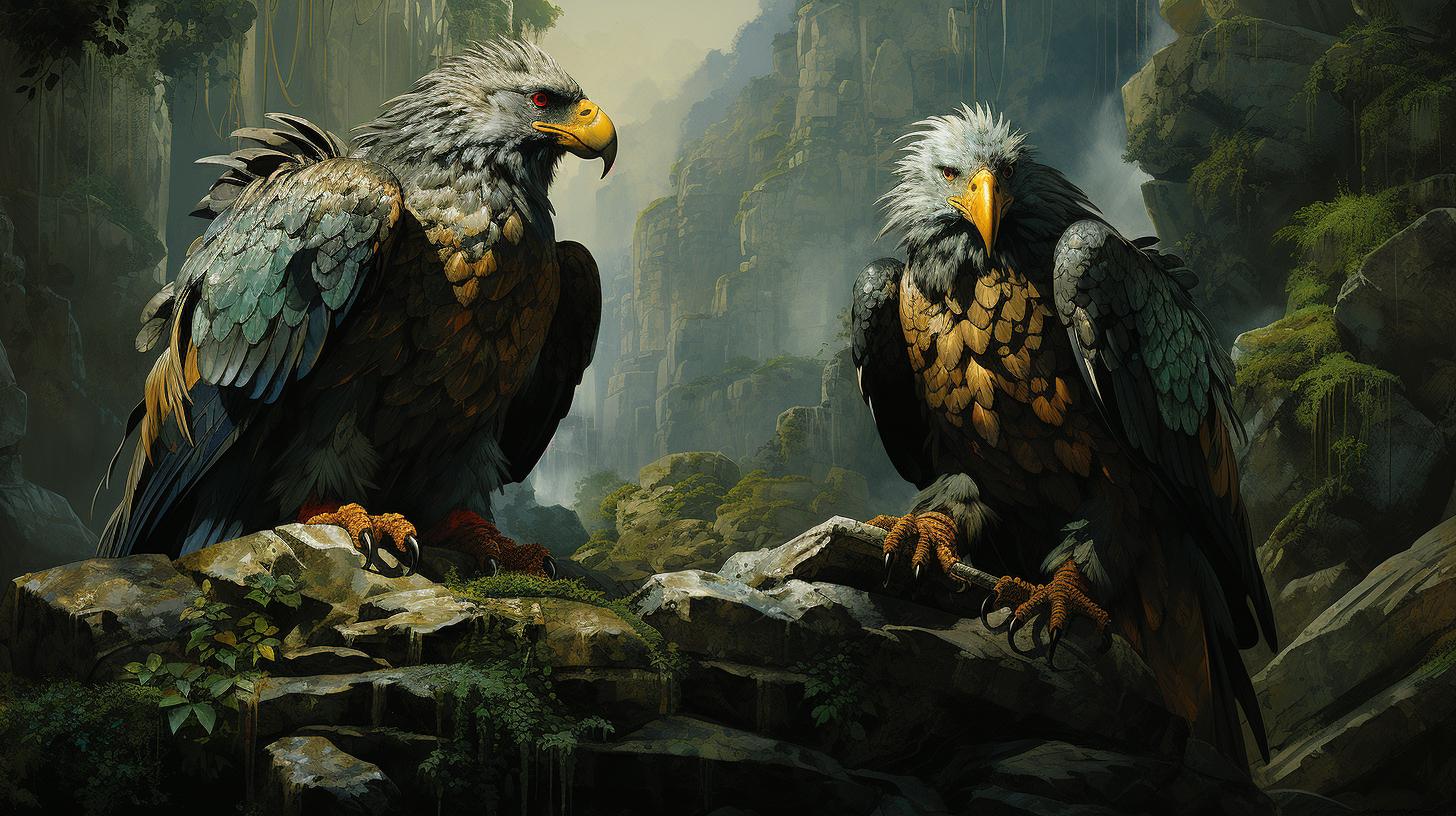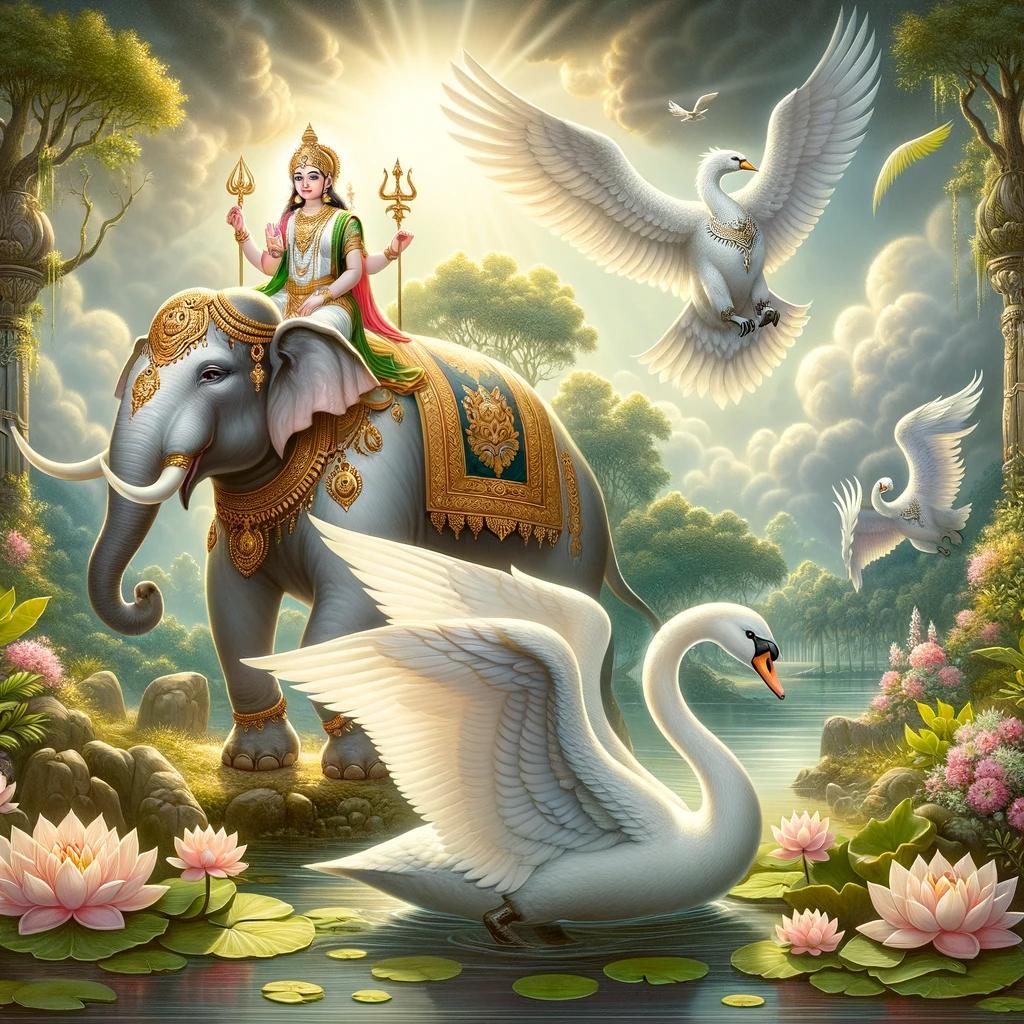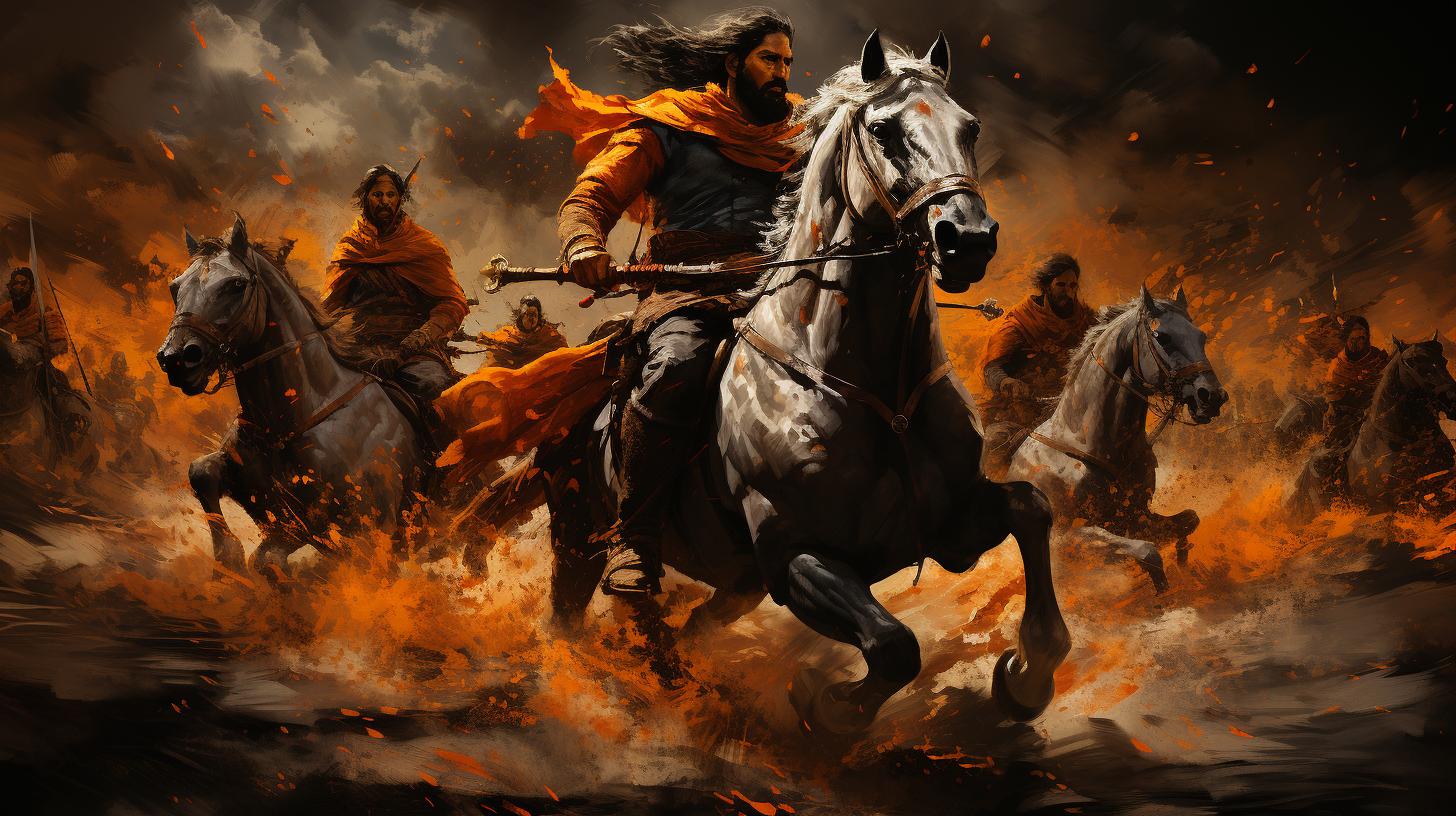The Epic Tale: Story of Varaha, Vishnu’s Majestic Avatar
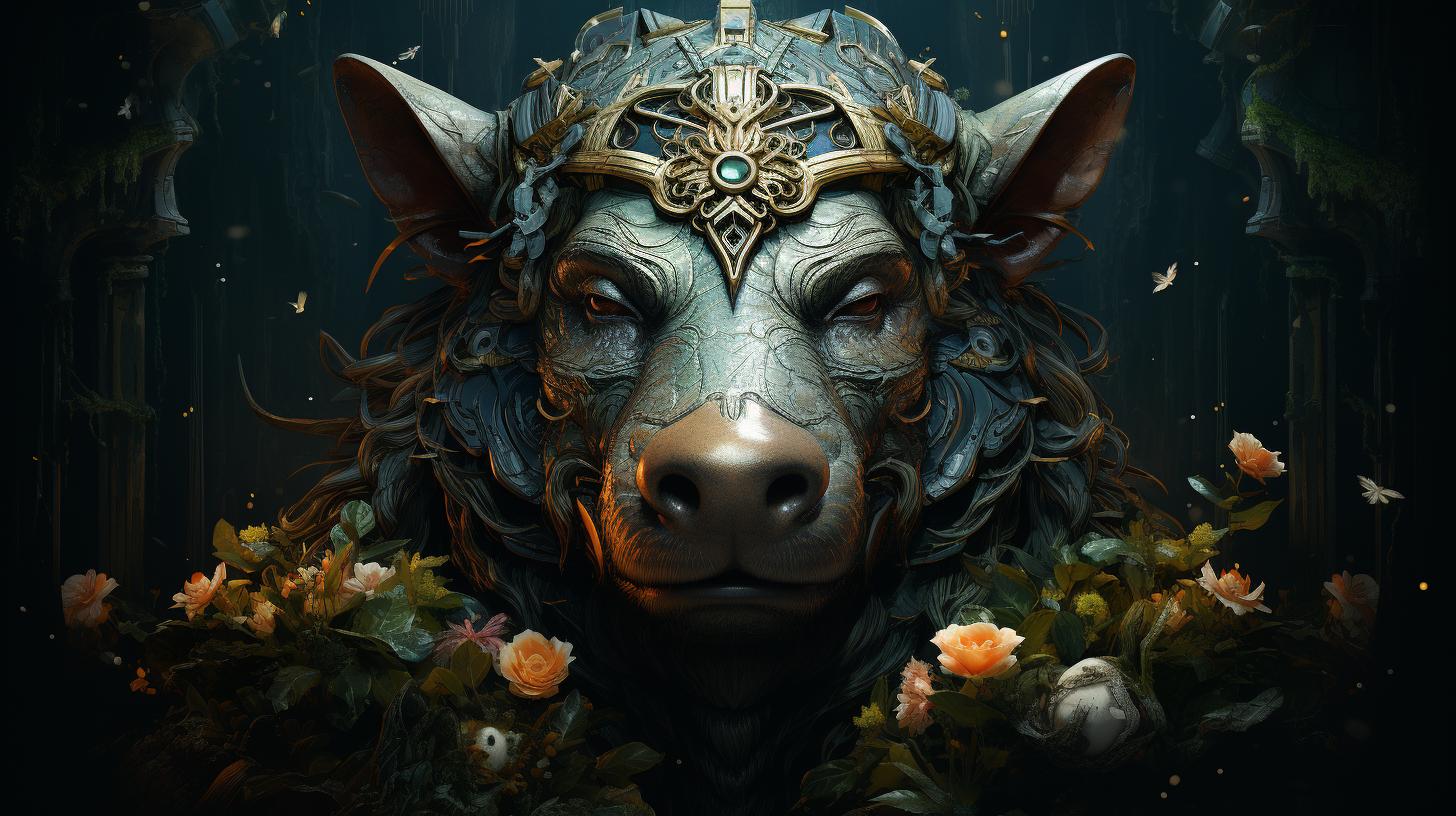
Varaha Avatar, the third incarnation of Vishnu, is a significant figure in Hindu mythology. Represented as a boar or a boar-headed human, Varaha’s main feat is rescuing the goddess Earth, Bhudevi, from the depths of the ocean.
This article explores the legend of Varaha Avatar, its symbolic representation, spiritual teachings, and its references in Hindu scriptures. Additionally, it delves into the worship and temples dedicated to Varaha, as well as its relevance in contemporary Hinduism.
Discover the epic story and profound teachings of Varaha Avatar.
The Concept of Avatars in Hindu Mythology
The rich mythology of Hinduism is filled with fascinating concepts, and one of the most significant is that of avatars. In Hindu belief, avatars are divine incarnations that descend to Earth to restore balance and protect dharma (divine law).
The Avatar of Vishnu
Among the many gods in Hinduism, Lord Vishnu holds a special place as the preserver and protector of the universe. Vishnu is believed to have ten major avatars, also known as Dasavatara, in which he takes different forms to fulfill specific purposes.
These avatars play crucial roles in maintaining cosmic order.
Significance of Varaha Avatar
Varaha Avatar is one of the most revered incarnations of Lord Vishnu. He descends to Earth in the form of a boar, representing strength, determination, and fearlessness. The significance of Varaha Avatar lies in his mission to rescue the goddess Earth, symbolized as Bhudevi, from the clutches of the demon Hiranyaksha.
By assuming the form of Varaha, Vishnu defeats Hiranyaksha and restores balance to the universe. This avatar teaches us the importance of standing against injustice, protecting the weak, and upholding righteousness at all costs.
The Legend of Varaha Avatar
The Legend of Varaha Avatar unfolds a captivating tale of cosmic balance and divine heroism. It begins with the birth of Hiranyaksha and Hiranyakashipu, the sons of Brahma, and their eventual descent into darkness and tyranny.
Hiranyaksha, driven by his arrogance and blessed with near-immortality, torments both gods and humans, culminating in his audacious act of submerging the Earth into the depths of the ocean.
Amidst despair, the sage Manu and his wife Shatarupa seek the intervention of Brahma, who, in turn, meditates upon the Supreme Lord Vishnu. Vishnu, hearing the plea of Earth personified as Bhudevi, decides to manifest as Varaha, the boar incarnation, to confront Hiranyaksha and restore equilibrium to the cosmos.
The Birth of Hiranyaksha and Hiranyakashipu
Hiranyaksha and Hiranyakashipu, born from the curse cast upon the gatekeepers Jaya and Vijaya, emerge as formidable adversaries. Hiranyaksha, bolstered by an invincible boon, wreaks havoc on the realms of gods and mortals, spreading fear and suffering unopposed.
His insatiable thirst for power propels him to invade Indra’s palace, further exacerbating the imbalance in the universe.
Hiranyaksha’s Tyranny and the Descent of Varaha
Hiranyaksha’s tyranny reaches its zenith as he plunges the Earth into the ocean’s abyss, thrusting the world into darkness and chaos. Recognizing the urgent need to restore harmony, Vishnu incarnates as Varaha to confront and vanquish the malevolent Hiranyaksha, thereby rejuvenating cosmic order.
Varaha’s Battle with Hiranyaksha
In a grand and ferocious battle, Varaha, in his formidable boar form, confronts Hiranyaksha, reminding him of the overlooked exception to his invincibility. Their clash reverberates through the realms, as Varaha fearlessly engages the tyrant, finally overpowering and defeating him, dismantling the forces of evil that threatened to consume all existence.
Varaha Rescues Bhudevi and Restores Balance
As the victorious Varaha emerges from the depths of the ocean, triumphantly carrying Bhudevi on his colossal tusks, the planet Earth is rescued from its submerged plight. Varaha’s heroic deed symbolizes the triumph of righteousness as he reunites Bhudevi with the celestial realms, restoring balance to the universe and uplifting the spirits of all.
Iconography of Varaha Avatar
The iconography of Varaha Avatar represents both its boar-like form and its depictions with Bhudevi, the personification of the Earth. These visual representations hold deep symbolism and convey profound spiritual messages.
Representation as a Boar
In Varaha Avatar, Vishnu takes the form of a boar, symbolizing strength, power, and ferocity. The boar is depicted with a robust body, broad shoulders, and a fierce expression.
Its physical attributes emphasize its ability to overcome challenges and protect the divine order. The boar’s large tusks and muscular form resonate with the formidable force needed to confront evil and restore balance in the universe.
Depictions with Bhudevi
One of the significant aspects of Varaha Avatar is the depiction of Bhudevi, the goddess Earth, being rescued by Varaha. In various representations, Bhudevi is shown either clinging to one of Varaha’s formidable tusks or being cradled in his arms.
These depictions symbolize Varaha’s role as the savior of the Earth, emphasizing the divine connection between Vishnu and the preservation of the world.
The iconography reflects both tenderness and strength, portraying the compassion and protection offered by Varaha Avatar towards Bhudevi. Bhudevi’s expression combines shyness and joy, signifying the gratitude and relief of being rescued from the depths of the ocean.
The representation of Varaha Avatar and Bhudevi in artwork and sculptures within Hindu temples serves as a visual reminder of the divine intervention that preserves the harmony and existence of life on Earth.
Symbolism and Spiritual Teachings
The Varaha Avatar holds profound symbolism and imparts valuable spiritual teachings to its followers. Here, we explore two key aspects of its symbolism and teachings: Varaha Avatar as the Preserver of Dharma and the Lessons of Courage, Devotion, and Salvation.
Varaha Avatar as the Preserver of Dharma
Varaha Avatar is revered as the embodiment of righteousness and the preserver of dharma, the cosmic order. As the divine boar, Varaha represents the power and strength needed to uphold and maintain universal harmony.
Through his valiant battle against the malevolent forces of evil, Varaha Avatar demonstrates the unwavering commitment to protect righteousness and restore balance in the world.
His presence reminds us of the importance of adhering to dharma in our own lives, promoting ethical values, and upholding justice and fairness.
By internalizing the principles represented by Varaha Avatar, individuals can contribute to a more harmonious and righteous existence.
Lessons of Courage, Devotion, and Salvation
The saga of Varaha Avatar provides valuable lessons on courage, devotion, and salvation. Varaha’s determination and fearlessness in rescuing Bhudevi from the depths of the ocean exemplify the importance of courage in overcoming obstacles and adversities.
His inspiring journey teaches us that with unwavering faith and resolve, we can confront any challenge that life presents.
Furthermore, Varaha Avatar symbolizes the profound devotion of the divine towards the well-being of creation.
His willingness to descend to Earth and battle against the demon represents the unconditional love and compassion of Vishnu towards humanity. This divine love serves as a reminder to cultivate deep devotion towards the divine and seek spiritual growth and enlightenment.
The story of Varaha Avatar resonates with the concept of salvation, emphasizing the ultimate liberation from the cycle of birth and death. By understanding the spiritual teachings embedded within this narrative, individuals can strive for self-realization, transcend the constraints of worldly existence, and attain salvation.
Through contemplating the symbolism and imbibing the teachings of Varaha Avatar, devotees seek to deepen their spiritual journey, nurture virtues such as courage, devotion, and righteousness, and ultimately connect with the divine.
Varaha Avatar in Hindu Scriptures
The Varaha Avatar holds significant references and prominence in various Hindu scriptures. It is mentioned in ancient texts like the Bhagavad Gita and Puranas, showcasing its relevance and spiritual teachings.
References in the Bhagavad Gita
The Bhagavad Gita, an essential scripture in Hinduism, includes verses that allude to Varaha Avatar.
In Chapter 10, Lord Krishna states, “Among varaha, I am the best of all creatures that can swim in water.” This depicts Varaha Avatar as a divine manifestation of Lord Vishnu and emphasizes its strength and importance in the divine hierarchy.
Varaha Avatar in Puranas and Epics
Varaha Avatar also finds mention in various Puranas and epic texts, where its heroic exploits and profound symbolism are elaborated upon. The Vishnu Purana, Shrimad Bhagavatam, and Varaha Purana provide comprehensive accounts of Varaha’s battle with Hiranyaksha, his victory, and the ultimate rescue of Bhudevi.
The Puranic texts elucidate the spiritual teachings associated with Varaha Avatar, emphasizing the preservation of dharma (righteousness) and the eradication of evil forces to maintain cosmic balance.
Furthermore, Varaha Avatar’s legend generates profound lessons of courage, devotion, and salvation, inspiring individuals to overcome challenges and maintain unwavering faith in the divine.
This sacred imagery of Varaha Avatar enriches the spiritual landscape of Hinduism, serving as a powerful allegory and a source of contemplation for devotees seeking enlightenment and deeper understanding of cosmic truths.
Temples and Worship of Varaha Avatar
Temples dedicated to Varaha Avatar hold a significant place in Hindu religious practices. These sacred sites serve as places of worship and pilgrimage, attracting devotees from all over the world. Here are some prominent temples dedicated to Varaha Avatar:
Prominent Temples Dedicated to Varaha
- Varaha Temple in Tirumala, Andhra Pradesh – Situated on the hills of Tirumala, this ancient temple is believed to be the original abode of Varaha Avatar.
- Varaha Swamy Temple in Simhachalam, Andhra Pradesh – This famous temple nestled in the picturesque Eastern Ghats is dedicated to Varaha Avatar and is revered as a sacred pilgrimage site.
- Varaha Lakshmi Narasimha Temple in Simhachalam, Andhra Pradesh – This unique temple complex houses both Varaha Avatar and Narasimha Avatar, showcasing their divine connection.
- Varaha Temple in Khajuraho, Madhya Pradesh – This UNESCO World Heritage Site features intricately carved sculptures, including depictions of Varaha Avatar.
Rituals and Festivals Associated with Varaha Avatar
Devotees engage in various rituals and celebrate festivals to honor Varaha Avatar.
These rituals and festivals foster devotion and highlight the significance of this divine incarnation. Some of the important practices include:
A. Varaha Jayanti:
Varaha Jayanti is the annual celebration of Varaha Avatar’s appearance on Earth. Devotees observe fasts, visit temples, and offer prayers to seek blessings and protection.
B. Bhudevi Puja:
Bhudevi, the personification of the Earth, is worshipped alongside Varaha Avatar in temples. Devotees offer prayers, flowers, and perform puja rituals to express gratitude for Mother Earth’s sustenance and seek her blessings.
C. Abhishekam:
Abhishekam, the ceremonial ritual of consecrating the deity, is performed in temples dedicated to Varaha Avatar. Devotees pour sacred substances like milk, honey, and sandalwood paste over the deity’s idol as a sign of devotion and purification.
D. Arati and Naivedya:
Arati, the waving of a lit lamp in front of the deity, and Naivedya, offering food to the deity, are integral parts of the worship rituals. Devotees participate in these practices to show their reverence and seek divine blessings.
By partaking in these rituals and festivals associated with Varaha Avatar, devotees strengthen their connection to Vishnu’s divine boar incarnation and deepen their spiritual journey.
Modern Interpretations and Relevance of Varaha Avatar
Varaha Avatar continues to hold a significant place in contemporary Hinduism, inspiring devotion, and serving as a symbol of divine protection and intervention.
The story of Varaha transcends time and remains relevant in the modern world, offering profound insights and inspirations for individuals seeking guidance in their lives.
Varaha Avatar in Contemporary Hinduism
In modern Hinduism, Varaha Avatar is revered as a deity who symbolizes the preservation of dharma (divine righteousness) and the restoration of cosmic balance.
Devotees worship Varaha to seek protection from adversities and to attain spiritual liberation.
Varaha is often viewed as a compassionate being who comes to the aid of those in need, reminding believers of the divine presence and the importance of standing up against injustice.
Many temples dedicated to Varaha Avatar have gained prominence, serving as centers of worship and spiritual solace for followers.
Inspirations from Varaha Avatar for Modern Life
The tale of Varaha Avatar offers valuable insights and inspirations that can be applied in modern life. Some of these include:
- Embracing courage: Varaha’s unwavering determination and fearlessness in the face of adversity serve as an inspiration to face challenges in life with courage and conviction.
- Devotion to duty: Varaha’s commitment to rescuing Bhudevi reflects the importance of fulfilling one’s responsibilities and upholding moral obligations.
- Restoring balance: The story of Varaha’s rescue of the Earth teaches us the significance of maintaining harmony and balance in our relationships, society, and the environment.
- Overcoming ego: Varaha’s victory over Hiranyaksha signifies the triumph of righteousness over ego and the ultimate realization that no force can overpower divine righteousness.
- Finding purpose: Varaha’s purpose in descending as an avatar was to rescue the Earth.
This reminds individuals to seek their own life’s purpose and work towards making a positive impact.
By reflecting upon the various aspects of Varaha Avatar’s story, individuals can draw inspiration and guidance in navigating the complexities of modern life, striving for personal growth, and contributing to the well-being of the world around them.
.

